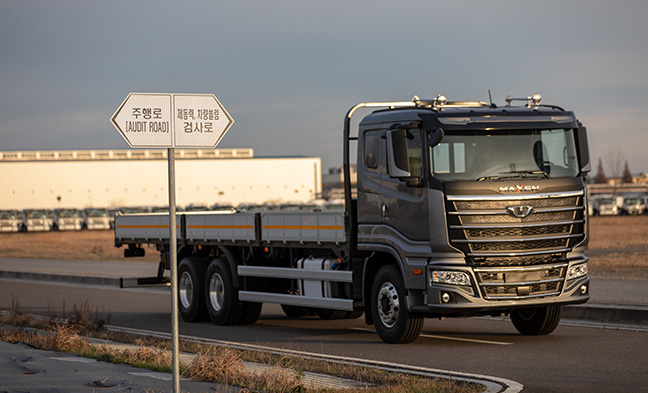COMPANY
INTRODUCTION
Introduction to Manufacturing Process
Truck Production Process
The journey of a truck before it reaches the customer.

-
01. Body Shop
It is the first process that makes
the exterior of the cab for
MAXEN, KUXEN and NOVUS.36 welding robots perform welding 3,000 times,
manufacturing 80% of the vehicle body.
Completely welded cabs are transferred by an overhead
conveyor to the paint shop.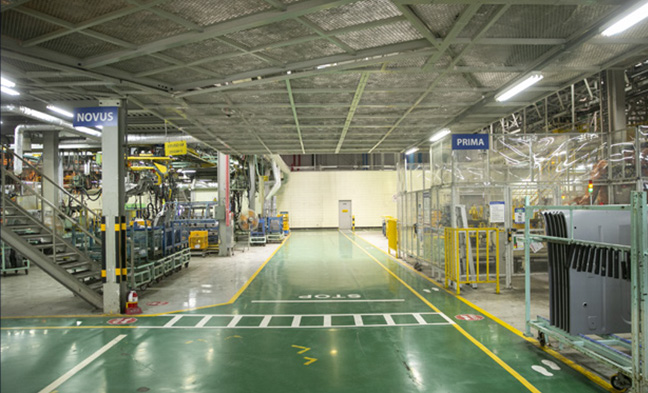
-
02. Paint Shop
It is the process that paints cabs.
The paint shop consists of 36 processes,
out of which the Full Dipping-based ED coating is applied
to prevent rust. We use an incineration equipment to purify polluted air
and apply special treatment to contaminated water for separation.
Painted cabs are transferred by a floor conveyor to the assembly shop.
-
03. Frame Shop
It is the process that assembles
and completes the frame.We produce different variants of vehicles efficiently by consistently
updating information necessary to make frames.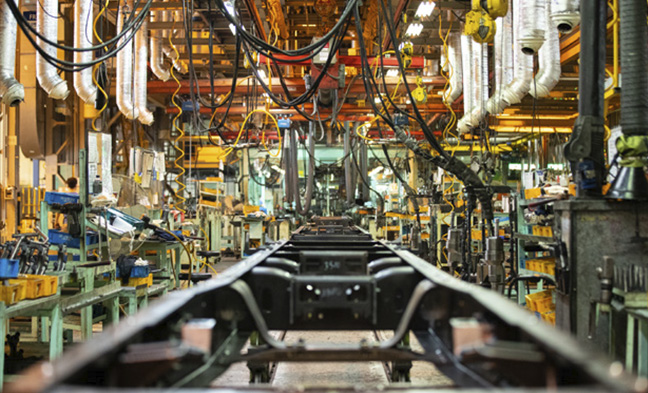
-
04. Assembly Shop
It is the process that assembles
completed cabs, frames and key
aggregates such as engines.The assembly shop is comprised of 24 trim lines and 28 chassis lines where highly-skilled operators assemble vehicles carefully and thoroughly.
The turnover process, in which the frame is flipped, enhances assembly precision by allowing for a stable posture and improves convenience for the operators.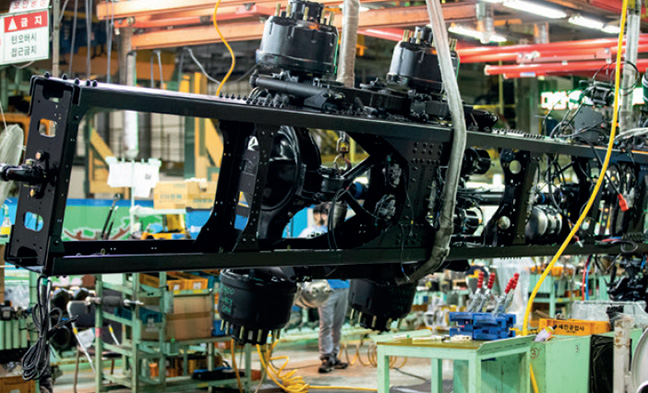
-
05. Final Shop
Finally, we assemble the rear body
onto the cab chassis and conduct
a quality inspection.We perform a shower test on all vehicles,
followed by regulatory inspections on
braking power / ABS / EBS and the final quality inspection.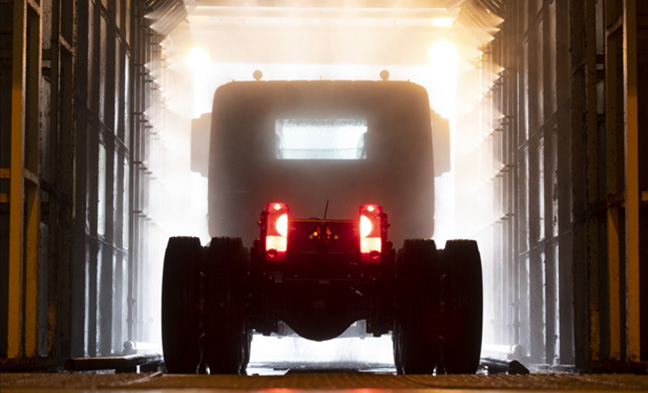
-
06. Training & Delivery Center
The training center provides both a training place and a rest area. In the training place, customers can see and touch parts. In the rest area, customers can relax while waiting for their vehicle.
Once the vehicle has completed its driving test, it is washed and equipped with delivery items before being handed over to the customer.
